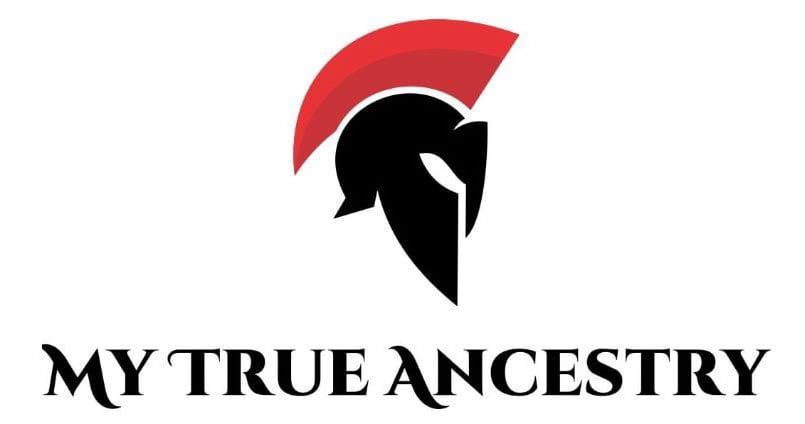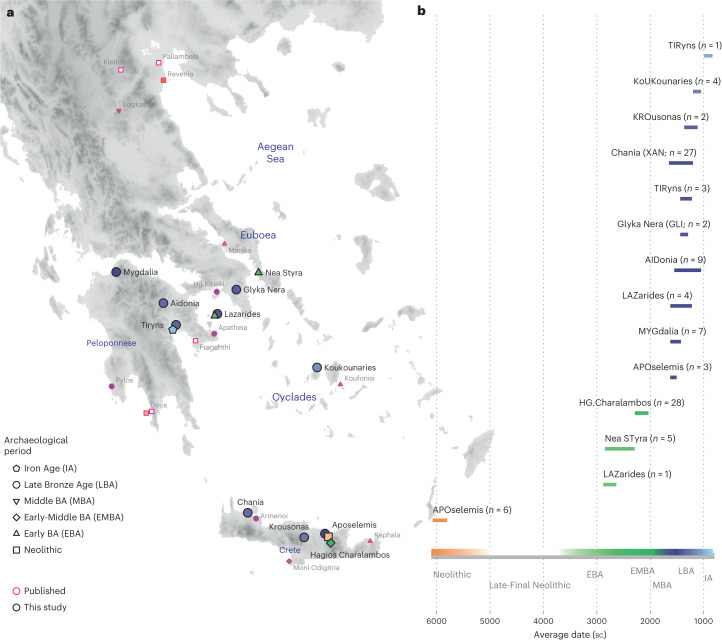The Prehistoric Aegean: Insights from Ancient DNA on Admixture and Endogamy





The story of the Aegean's ancient peoples is one of remarkable complexity and intrigue, woven through with threads of genetic, cultural, and historical significance. Spanning from the Neolithic era to the Iron Age, the landscape of Crete, the Greek mainland, and the mystical Aegean Islands serves as a cradle for diverse and intricate human interactions that shaped the foundations of European civilization.
Buried within this captivating region, a richly detailed genomic tapestry emerges from the remains of 102 ancient individuals whose lives, upon close genetic investigation, reveal truths of migration and interrelation previously shrouded in mystery. These individuals, unearthed from sites including the renowned palace grounds of Knossos and the collective graves at Nea Styra, mark a pivotal narrative of human journeying across time and sea.
Many of the peoples we study — Celts, Greeks, Scythians, or Etruscans — live on not only in culture, but in the traces of their DNA. Seeing where your genome intersects with theirs can make history feel surprisingly close. You can explore this at www.mytrueancestry.com.
The early farmers of Crete were united in ancestry with their Aegean counterparts, painting a vivid picture of cohesive cultural mechanisms working across the azure waters. These earliest settlers, emerging as early as the seventh millennium BC, established farming communities beneath what would later become the magnificent palace at Knossos. Their genetic signatures reveal shared ties with Neolithic populations throughout the Aegean world, forming an interconnected matrix of cultural exchange and biological kinship.
However, the dawn of the Early Bronze Age ushers in waves of eastern gene flow—primarily Anatolian in origin—resulting in discernible shifts in the genetic composition of Crete and the enveloping islands. It is this genetic flow, traced methodically from the Nea Styra graves and other archaeological sites, that highlights the direction and diffusion of cultural influences sweeping over the Aegean terrain like waves upon ancient shores.
Among the spectral halls stretching from the Zagros Mountains to the bustling coastal routes of trade and seafaring, sites like Hagios Charalambos on Crete and the powerful mainland settlements such as Tiryns, Mycenae, and Pylos hold secrets of profound societal connections. Gold ornaments and intricate seal rings, discovered within rich shaft graves, whisper of an era where Minoan artistry and Mycenaean craftsmanship threaded an intertwined civilization that voyaged across the Mediterranean world.
Excavations at sites like Nea Styra on Euboea revealed shaft graves containing individuals with compelling genetic diversity, hinting at communities intertwined with far-reaching genetic threads from places as diverse as the Iranian uplands, the Caucasus, and Anatolia. Five individuals interred in a singular shaft grave show the remarkable cultural and biological transformations occurring during this pivotal period in human history.
On Crete, the timeline progresses from the early Neolithic settlers of Aposelemis to the elaborate urban developments at Chania and Hagia Triada during the Late Bronze Age. These sites represent not only architectural and cultural sophistication but also serve as beacons of intense genetic and cultural exchanges, with buried inhabitants revealing traces of continental Europe and the steppe lands through their genetic legacy.
The power struggle and blending of Cretan and mainland influences becomes apparent through biomolecular analysis. Endogamy—marriages within confined kinship groups—emerges as a striking social practice, with intense familial bonds noted within burial sites such as the Mygdalia infant burials and the collective ossuary at Hagios Charalambos. This intricate consanguinity offers glimpses of tight-knit community structures unparalleled in the ancient DNA archives of the world.
Nearly half of the analyzed individuals showed close familial relationships akin to those of first cousins, revealing a cultural phenomenon that was widespread throughout the Aegean during this period. These findings point to a sophisticated social fabric interwoven with familial bonds, where kinship ties were fortified through marriage within family lines—a testament to the enduring importance of family in shaping societal structures and maintaining social continuity.
The skeletal remains from various sites, preserved alongside their historical accompaniments, present intriguing examples of this phenomenon. Collective burials unearthed within residential Mycenaean settings revealed family trees of interconnected kin, highlighting the complex dynamics of these endogamous practices and their role in maintaining cultural identity and social cohesion.
As the Neolithic age declined and transitioned into the Bronze Age, Crete witnessed successive waves of migration that fundamentally altered its genetic landscape. The eastern influx, largely Anatolian in character, brought with it transformative cultural and biological changes that unraveled over several centuries. By the Middle Bronze Age, further genetic threads from Central and Eastern Europe had found their way onto the island, interweaving with local populations and turning Crete into a rich genetic tapestry.
The Mycenaean culture, famed for its opulent graves and legendary citadels, left not only archaeological but also genetic fingerprints that showcase dynamic interchange between island and mainland populations. Rich shaft graves from the Middle Bronze Age revealed intriguing Minoan influences on the Greek mainland, pointing to deep-rooted ties between Crete and continental Greece that transcended mere trade relationships.

Discover how your DNA connects to ancient civilizations at www.mytrueancestry.com.
Comments